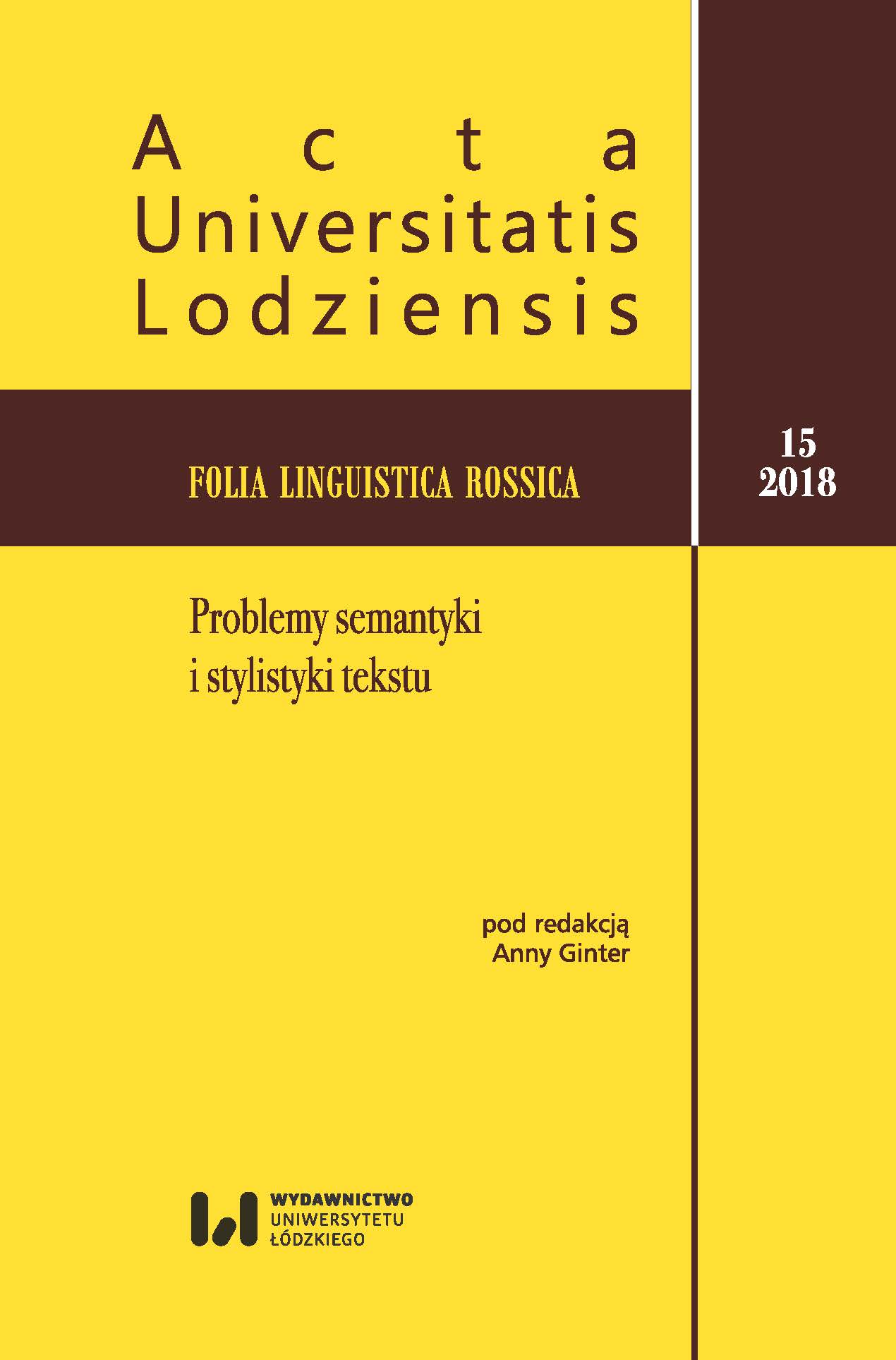Stylistyczna i frekwencyjna specyfika rosyjskich i polskich leksemów z morfemami био-/bio-, гипер-/hiper-, мега-/mega-
DOI:
https://doi.org/10.18778/1731-8025.15.15Słowa kluczowe:
morfemy био-/bio-, мега-/mega-, гипер-/hiper, style funkcjonalne, frekwencja, semantykaAbstrakt
W niniejszym artykule omówiono wybrane rosyjskie i polskie leksemy zawierające morfemy greckiego pochodzenia био-/bio-, мега-/mega- oraz гипер-/hiper- z punktu widzenia ich właściwości stylistycznych i frekwencyjnych. Materiał badawczy został zaczerpnięty głównie z narodowych korpusów językowych oraz słowników wyrazów obcych i objaśniających. Pod uwagę wzięto wszystkie style funkcjonalne języka rosyjskiego i polskiego z wyjątkiem naukowego, który ze względu na swoją specyfikę i precyzję semantyczną należących doń terminów nie pozwala na jakąkolwiek znaczeniową wariantywność badanych leksemów.
Bibliografia
Адамчик В. В. (2005) (ред.), Новейший словарь иностранных слов и выражений, Минск.
Google Scholar
Вальчак М. (2016), Греческие корни в лексическом составе русского и польского языков (семантический, словообразовательно-морфологический и стилистический аспекты), Кatowice.
Google Scholar
Ефремова Т. Ф. (2005), Современный толковый словарь русского языка, том II, Москва.
Google Scholar
Калишан Е. (1976), Препозитивные блоки греко-латинского происхождения как словообразовательные элементы в русском и польском языках, „Studia Rossica Posnaniensia” nr 8, c.153–160.
Google Scholar
Калишан Е. (1980), Интернациональные препозитивные морфемы греко-латинского происхождения в современном русском и польском словообразовании, Poznań.
Google Scholar
НКРЯ: Национальный корпус русского языка, http://www.ruscorpora.ru/
Google Scholar
Окунцова Е. А. (2009) (сост.), Новейший словарь иностранных слов, Москва.
Google Scholar
СФиЮТ: Словарь финансовых и юридических терминов, https://www.consultant.ru/law/ref/ju_dict/
Google Scholar
СЭВ: Свободная энциклопедия Википедия, https://ru.wikipedia.org/wiki/Биотуалет
Google Scholar
Bańko M. (2008) (red.), Wielki słownik wyrazów obcych, Warszawa.
Google Scholar
Bańko M. (2017) (red.nauk.), Inny słownik języka polskiego PWN, tom 1, Warszawa.
Google Scholar
Drabik L. (2011) (oprac.), Słownik wyrazów obcych. Z przykładami i poradami, Warszawa.
Google Scholar
Kopaliński W. (1994), Słownik wyrazów obcych i zwrotów obcojęzycznych. Z almanachem, Warszawa.
Google Scholar
Kopertowska D. (2001), Struktura współczesnych chrematonimów na tle dawnego nazewnictwa tego zakresu, [w:] red. Ł. M. Szewczyk, M. Czachorowska, Język polski w rozwoju, Bydgoszcz, s. 11‒33.
Google Scholar
NKJP: Narodowy Korpus Języka Polskiego, http://nkjp.pl/
Google Scholar
Pacuła J. (2011), Leksykalne wykładniki aprobaty we współczesnej polszczyźnie potocznej. Źródła – ewolucja – prognozy, „Kwartalnik Językoznawczy” nr 2 (6), s. 32–49, http://www.kwartjez.amu.edu.pl/teksty/teksty2011_2_6/Pacula.pdf
Google Scholar
Pobrania
Opublikowane
Jak cytować
Numer
Dział
Licencja

Utwór dostępny jest na licencji Creative Commons Uznanie autorstwa – Użycie niekomercyjne – Bez utworów zależnych 4.0 Międzynarodowe.









